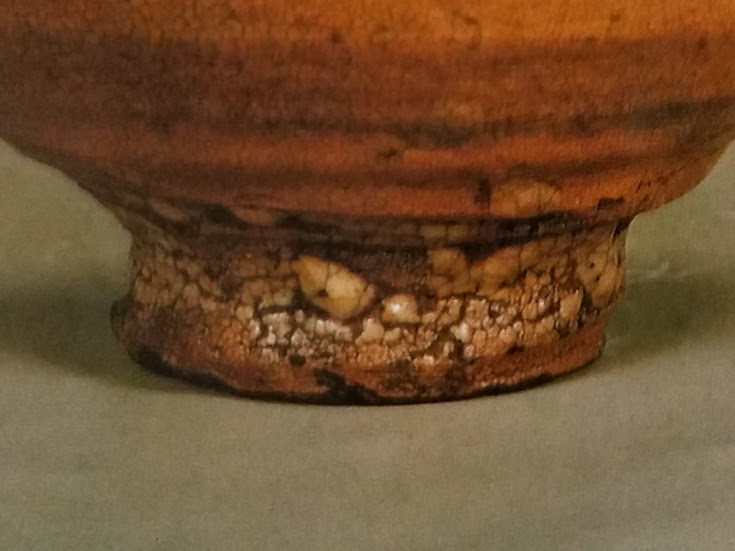
井戸茶碗・Ido chawan
井戸茶碗とは、16世紀頃に朝鮮半島から伝わった高麗茶碗の一種です。現代に至るまで侘び茶の道具として愛されています。白磁が珍重されていた朝鮮半島では日常雑器として使われていましたが、「山上宗二記」によれば山上宗二(利休の弟子)により抹茶碗に見立てられたのが始まりだそうです。
Ido is a type of Korean-style bowls that came to Japan from the Korean Peninsula sometime in the 16th century . To this date ido bowls are favored as utensils of choice for wabi tea. In the Korean Peninsula, where white porcelain was highly valued, ido bowls were used merely as lowly everyday ware. However, the “Yamano’u’e no So’uji Chronicle” records that So’uji Yamano’u’e (Rikyu’s disciple) first adopted ido bowls as tea utensils.
「井戸」の 名の由来については様々な説がありますが、落語「井戸の茶碗」にあるように「井戸のように深い茶碗」の意とする説が有力のようです。なるほど典型的な井戸茶碗は「大井戸」とも呼ばれます。
As to the origin of the name “ido,” there are several theories. The most widely known is that the name “ido” comes from the depth of these bowls as they are as deep as wells (ido). Such association is also made in a classic comedy (rakugo): “Ido Tea Bowl” (ido no chawan). Understandably, a typical ido bowl may also be referred to as “o’o’ido” (great ido).
主な特徴として井戸茶碗に頻繁に見受けられるのがこちらです:
Some of the typical features often seen in ido bowls are:
- 枇杷色(びわいろ)の釉薬をつかう (「青井戸」という釉薬に青みがかったものもある)
- Glazes of the “biwa” (Eriobotrya japonica) color are used.
- There are “a’o ido” (blue ido) bowls – with glazes of blue hues.
- Glazes of the “biwa” (Eriobotrya japonica) color are used.

青井戸・Blue ido
- 釉薬が高台まで全体にかかり土見ずになっている
- Glazes cover bowls entirely without leaving unglazed areas.
- 茶だまりに器を重ねて焼いた跡である目跡がある
- There are marks inside the bowls at the bottom that are left by a spacer for stacking up bowls during firing.
- 胴部に四段・五段などの 轆轤目がある
- The body has four or five potter’s wheel marks (rings).
- 高台脇の釉薬が粒状に縮れて固まった梅花皮(かいらぎ)がある
- Near ko’uda’i (the pedestal) glazes are sizzled and balled up to create the ka’iragi effect.
- 高台が竹の節に似ている竹節高台となっている
- Ko’uda’i resembles a bamboo node (takebushi).
- 高台内側中央部が突起をなして兜巾(ときん)状となっている
- The middle of ko’uda’i is protruding to create a tokin (a small pillbox-like hat) shape.


竹節高台、梅花皮と兜巾・Bamboo node ko’uda’i with ka’iragi and tokin
【参考・References】
http://ja.wikipedia.org/wiki/高麗茶碗
http://www.geocities.jp/maruti2032/idochawan.html
Originally published on October 3, 2014

Leave a comment